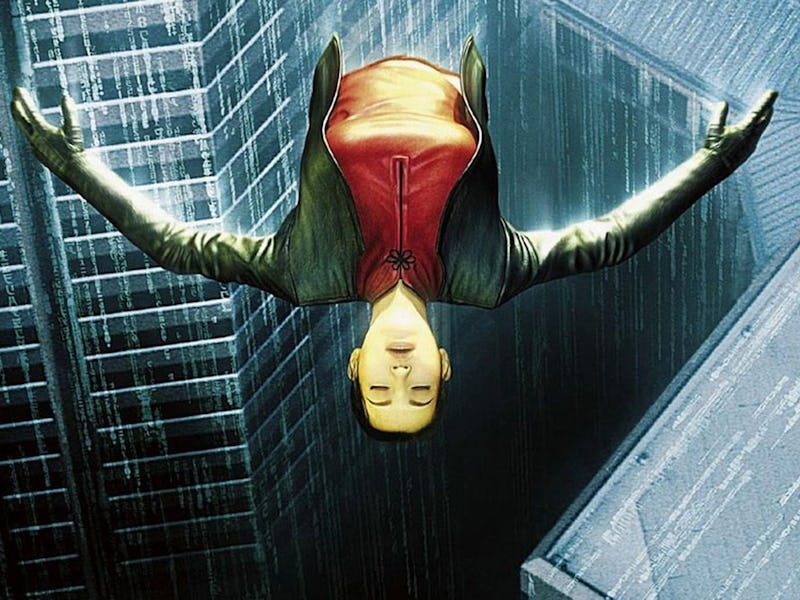The Matrix Changed Sci-fi. Its Animated Spinoff Did Too.
“Final Flight of the Osiris” was a landmark technical accomplishment, even if it looks like a video game cutscene today.

The Matrix changed cinema forever, pairing the brilliant fight choreography of Hong Kong filmmaker Yuen Woo-ping with a meticulous dystopian vision from Lana and Lilly Wachowski. After its 1999 release, however, audiences had to wait four years for their next taste of The Matrix’s world. No, not The Matrix Reloaded; in 2003, two months before that divisive sequel’s release, the CGI short “The Final Flight of the Osiris” was screened as an opener to Stephen King adaptation Dreamcatcher.
“Osiris” served as a narrative bridge between The Matrix and The Matrix Reloaded, but 20 years later, it was also a clear sign of the coming shift from practical-effects-driven filmmaking to the CGI-laden features that Hollywood pumps out today. The nine-minute short film centers on the doomed crew of the Osiris, especially captain Thaddeus (Kevin Michael Richardson) and crew member Jue (Pamela Adlon). The first half is devoted to sensual acrobatics as the two spar in a virtual dojo reminiscent of the one where Neo trains with Morpheus. As they fight, they slice articles of clothing off each other, eventually leaving the two mostly naked, breathing heavily on each other, and resisting the urge to kiss.
The moment is interrupted by a blaring alarm. The Osiris has encountered a massive force of robotic Sentinels burrowing towards Zion, the last human city, and the short segues to the crew fighting off the Sentinels long enough for Jue to plug into the Matrix and warn Zion. Everyone dies, but their mission is a success. The message is mentioned in The Matrix Reloaded, while Enter the Matrix, the video game that runs concurrent to the movie, sees Niobe (Jada Pinkett Smith) retrieve it. Later, “Final Flight of the Osiris” was one of the nine animated shorts that made up The Animatrix, the worldbuilding direct-to-video anthology.
“Osiris” has aged well, especially considering how much CGI has evolved since 2003. While it’s visually dated, you can tell that it was at the cutting edge of technology still used today. “Osiris” was far from the first theatrically-screened film to use CGI, an honor that goes to 1973’s Westworld (or 1958’s Vertigo, if you count title sequences). However, it arrived at a time when CGI was becoming more economically viable. In Westworld, CGI was used sparingly. In 2001, Final Fantasy: The Spirits Within was entirely CGI. It took four years and $150 million to produce a box office bomb that killed Square Pictures, but the famous game developer’s filmmaking wing held on long enough to be hired by the Wachowskis to make “Final Flight of the Osiris.”
Yes, it looks like a PlayStation 3 cutscene. Yes, it was groundbreaking.
While 1995’s Toy Story is considered the first full-length all-CGI film, it wasn’t trying to look photorealistic. The Spirits Within and “Final Flight of the Osiris” were. Andrew R. Jones, who directed “Osiris” after working as animation director on Spirits Within, spoke to CG Channel in 2003 about how “Osiris” pushed the medium forward.
“I think we pushed the technology a bit further than [in Final Fantasy] in regards to the facial animation, skin deformation, and the skin texture. We had developed so much on Final Fantasy, in terms of tools and technology, that it was easy to just add to our existing pipeline with more details to get a little closer to realism.”
Both The Spirits Within and “Osiris” have been reduced to footnotes in cinematic history, probably because their technical feats were more impressive than their storytelling ones. “Final Flight of the Osiris” in particular feels like a minor miracle squeezed in before the death of Square Pictures; a final flight for the ambitious studio itself. Many of its creators, including Jones, continue to work as behind-the-scenes cinematic pioneers. And “Osiris” exists as a symbol of what was to come: a Hollywood when heavy use of CGI in all kinds of films would no longer be experimental, but rather — for better and worse — commonplace.
This article was originally published on